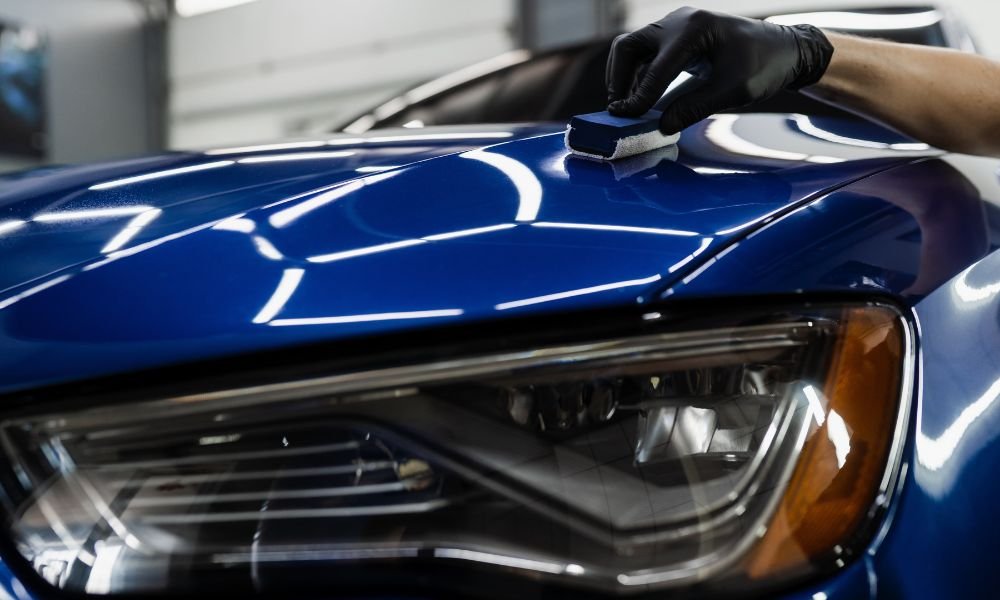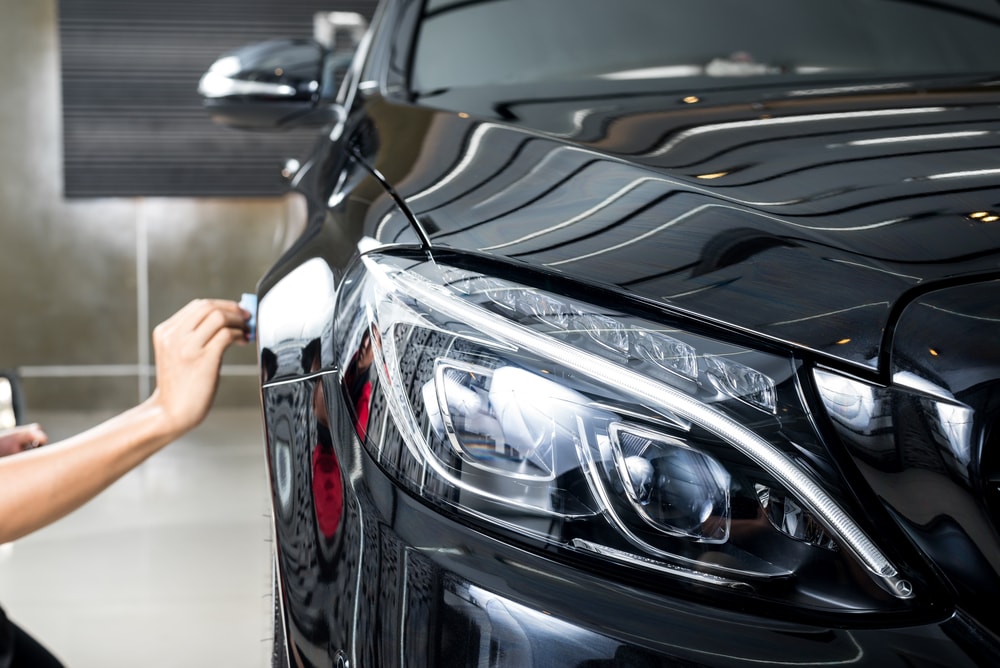Top Ceramic Coatings San Jose to Protect Your Automobile's Paint
Top Ceramic Coatings San Jose to Protect Your Automobile's Paint
Blog Article
Revealing the Scientific Research Behind Ceramic Coatings: How Does It Work and Why Is It Above Typical Options?
Ceramic coverings have been acquiring popularity in numerous sectors for their outstanding efficiency and sturdiness. Recognizing exactly how ceramic finishes work and why they surpass standard choices is crucial for those looking for to enhance the long life and strength of their products.
The Chemistry of Ceramic Coatings
In comprehending ceramic coverings, delving right into the elaborate chemistry behind their make-up is important for comprehending their performance and toughness. Ceramic finishings are mainly composed of silicon dioxide (SiO2), which forms a protective and solid layer when related to different surface areas. This chemical structure supplies phenomenal resistance to warm, chemicals, and rust, making ceramic coverings extremely sought after for a large range of applications.
The chemistry behind ceramic finishes includes the formation of covalent bonds in between silicon and oxygen atoms, creating a stiff network that boosts the finish's strength and toughness. Additionally, the existence of various other elements such as light weight aluminum, titanium, and zirconium more enhances the finishing's homes, supplying increased hardness and adhesion to surface areas.
Understanding the chemical structure of ceramic layers enables the personalization of solutions to suit specific demands, whether it be for automobile, commercial, or household functions. By utilizing the power of chemistry, ceramic finishings remain to lead the way for superior protection and efficiency in numerous markets.
Benefits of Ceramic Coatings

As a result, ceramic finishings make cleansing and keeping surfaces much simpler and much less time-consuming. Generally, the wide range of benefits offered by ceramic layers make them a superior choice compared to standard layer methods.
How Ceramic Coatings Bond
Ceramic finishes bond to surface areas via a procedure that entails molecular adhesion and chemical interactions. When a ceramic covering is put on a surface, it develops a strong bond by chemically adhering to the surface at a molecular level. This bond is produced with the development of covalent bonds, which are very solid and long lasting. The ceramic covering's molecules permeate the pores of the surface area, creating a tight grip that resists separation.
In addition, the chemical communications in between the ceramic covering and the surface better boost the bond. ceramic coatings san jose. These the original source communications allow the ceramic covering to develop a smooth and continual layer on the surface area, supplying outstanding protection and resilience. Unlike traditional layers that might rest on the surface area without completely bonding, ceramic finishes produce a permanent bond that is immune to chemicals, UV rays, and harsh environmental problems

Fundamentally, the bonding device of ceramic finishes makes sure a lasting and reliable safety layer that outshines conventional coating choices. This superior bond adds to the sturdiness, scrape resistance, and durability of ceramic finishings, making them a preferred selection for different applications.
Resilience of Ceramic Coatings
The extraordinary longevity of ceramic finishings comes from their durable molecular adhesion and chemical interactions with surface areas, ensuring a resilient safety layer that goes beyond traditional finish alternatives. As soon as used, ceramic finishes develop a strong bond with the substratum, producing a durable obstacle against numerous environmental stressors such as UV radiation, chemicals, and abrasions. This bond is so secure that it can hold up against the roughness of daily usage without deteriorating or deteriorating try these out quickly.
Unlike conventional finishings that may deteriorate over time, ceramic finishings maintain their integrity for an extensive duration, supplying lasting protection for the underlying surface. On the whole, the exceptional longevity of ceramic layers makes them a remarkable option for safeguarding a wide array of surfaces in various applications.
Ceramic Coatings Vs. Typical Choices
In comparison to traditional layer methods, ceramic coverings provide an unique mix of toughness and safety abilities that establish them apart in various surface area protection applications. Standard options such as wax or sealers provide a short-term layer of defense that can subside promptly, needing frequent reapplication. On the other hand, ceramic coatings create a strong bond with the surface, creating a irreversible or semi-permanent barrier that is highly resistant to abrasion, chemicals, UV rays, and extreme temperature levels.
Furthermore, ceramic finishes supply remarkable hydrophobic buildings contrasted to standard finishes. The hydrophobic nature of ceramic layers triggers water to grain up and roll off the surface, carrying dirt and impurities with it. This self-cleaning impact aids to preserve the surface area's cleanliness and gloss for extended durations, decreasing the demand for frequent upkeep.
In addition, ceramic finishes have a thicker layer contrasted to traditional alternatives, providing boosted scratch resistance and protection versus small effects. This longevity makes sure lasting efficiency and assists preserve the visual allure of the treated surface area for an extended period.
Conclusion
To conclude, the science behind ceramic coatings depends on their chemical composition and bonding buildings, making them remarkable to typical choices. The advantages of ceramic layers include raised durability and security for surfaces. By recognizing exactly how ceramic coverings work and their advantages over typical options, one can make informed choices when thinking about finishing choices for numerous applications.
Unlike typical layers that may sit on the surface without totally bonding, ceramic finishings develop a long-term bond that is resistant to chemicals, UV rays, and rough environmental problems.
The remarkable longevity of ceramic layers stems from their durable molecular adhesion and chemical interactions with surface areas, making sure a long lasting protective Related Site layer that goes beyond traditional covering choices.Unlike typical finishings that might break down over time, ceramic layers keep their stability for an extensive duration, offering lasting protection for the underlying surface.In contrast to traditional covering methods, ceramic layers use a distinctive blend of toughness and safety capabilities that establish them apart in numerous surface area protection applications. By understanding how ceramic coverings work and their benefits over typical alternatives, one can make informed decisions when taking into consideration finish alternatives for various applications.
Report this page